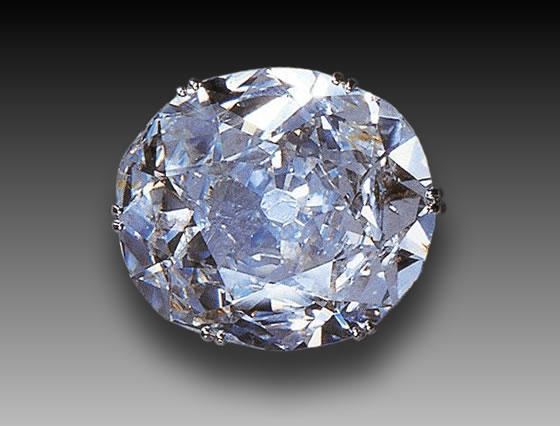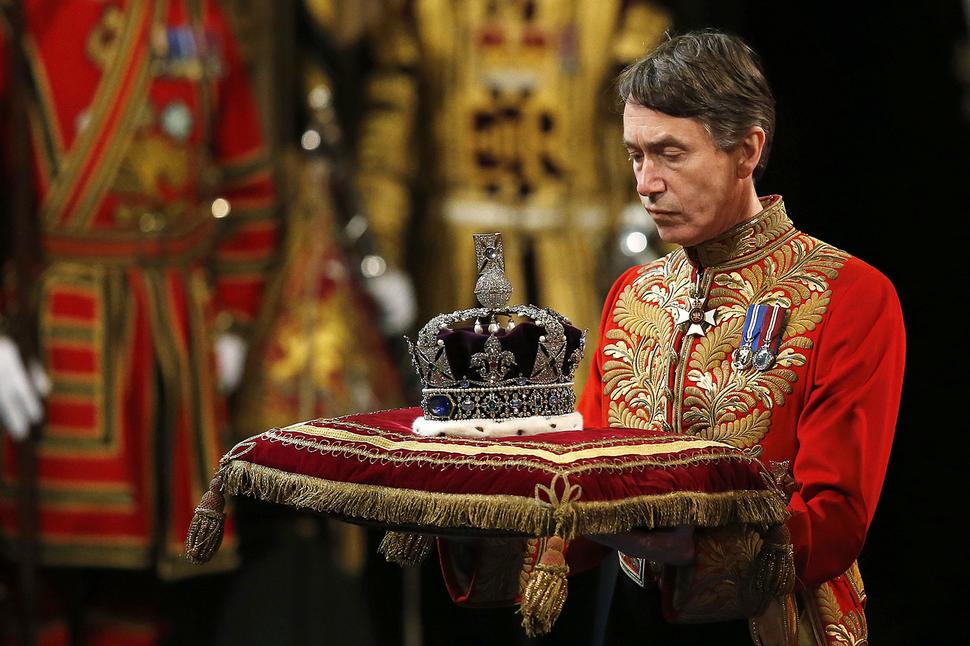THE LEGEND OF THE KOH-I-NOOR
The Legend of the Koh-I-Noor
India has long been revered by gem enthusiasts for its history of ancient and world-famous gems. Kings and chieftains of India have often been measured by their collection of jewelry and precious stones, passed down by ancestors, gifted between leaders, and more often than not, won and lost in bloody battles.
Perhaps most famous of all the precious stones that have made their way into Indian and world folklore is the Koh-I-Noor Diamond. It was once believed that whoever owned this infamous gem ruled the world. It is most likely that the Koh-I-Noor started life in the Golkonda Kingdom, in the Southern Indian state of Andhra Pradesh. The Golkonda Kingdom was one of the world's earliest diamond producing regions, and one of the only regions known to mine diamonds until 1725, when they were first discovered in parts of Brazil.
The Koh-I-Noor currently weighs 105 carats (21.0g), though it was once known to be the largest diamond in the world, at a whopping 793 carats! It is considered to be of the finest white color, clarity, and transparency. Not all diamonds are actually white; impurities can cause a diamond to display shades of red, orange, blue, yellow, green and black. Whilst a small amount of brilliant blue, pink and green mined diamonds are considered to be among the rarest precious stones, a vast amount of diamonds are mined and discovered every year. Less than 20% of them are considered to be worthy of jewelry, so the remaining 80% tend to be put to industrial use.

The Legend of the Koh-I-Noor
As with many legendary diamonds and gems, there are contrasting stories and rumors regarding the origin of the Koh-I-Noor. Some believe it was a gift to the earth from Surya (the god of the sun), and that evidence of its existence can be found in ancient Sanskrit writings, dating back over 5000 years. Some Hindus believe it was stolen from the great god Krishna as he lay asleep, whilst others say the Koh-I-Noor was, in fact, the Syamantaka Jewel, another famous precious stone from Indian mythology, believed to have been blessed with great magical powers.
The first real evidence of the Koh-I-Noor can be found in the memoirs of Barbur, the founder and first leader of the Mogul Empire. Barbur recorded the diamond amongst the treasures of Ala-ud-deen (better known to some as Aladdin), and it was said to have been won in battle in Mahwah, in 1304 AD.
In 1526, it was obtained by the Moguls. Then it was said to have been at its original weight of 793 carats but after some awful cutting and polishing by the Emperor's jeweler, Borgio, the stone was reduced to just 186 carats, and Borgio was said to have been severely punished!
The Mountain of Light
In 1739, when the Persians invaded and conquered India, the Indian Emperor, Muhammed Shah, hid the Koh-I-Noor in his turban. Alas, the Persian leader, Nadir Shah had been tipped off about the secreted gem by a member of Muhammed's harem, and before returning back to Persia, Nadir invited Muhammed to join in with their celebrations, part of which included a well-known Oriental tradition whereby Shah and Muhammed would exchange turbans to symbolize their new found friendship and lay down peace between the two nations. The Mogul leader was unable to refuse the gesture and this became famously known as the 'turban trick'. When Nadir later unraveled the turban and first laid his eyes on the large brilliant stone he was believed to have proclaimed 'Koh-I-Noor!', which translates as 'Mountain of Light'.
Through Blood and Battle
Nadir Shah took the Koh-I-Noor back to Persia and held on to it until his death, shortly after which the Koh-I-Noor passed through several owners, being won and lost in a sequence of fierce and bloody battles, finally being acquired by Ahmed Shah, who became the King of Afghanistan. Ahmed held the diamond in very high regard, claiming it to be a true symbol of power and authority; he too would hold on to the Koh-I-Noor for some time, before yet another series of brutal fights and rebellions that would take both the diamond and his life.
In 1830, the diamond made it's way back to India, carried by Shuja Shah, the then recently deposed Afghan ruler. He arrived in Lahore and begged the Maharaja to help him win back his throne in Afganistan. It is said that to the astonishment of Maharaja Ranjit Singh, Shuja refused to offer the Koh-I-Noor as part of the deal, and then Ranjit Singh hit Shuja several times with his shoe and threatened to kill him before the diamond was finally handed over and as a result, the Kingdom of Afghanistan was won back for the grateful Shuja Shah.
The Koh-I-Noor in Britain
When Ranjit Singh died in 1839 the Sikh kingdom began to lack leadership and power. Then on 29 March of 1849, when the British raised their flag in Lahore, Punjab was proclaimed part of the British Empire in India.
In 1850 the British thought it fitting that the new Maharaja, Duleep Singh, should personally present the Koh-I-Noor diamond to Queen Victoria, after which it became the centerpiece of 'the Great Exhibition' staged in Hyde Park, London, which displayed the large diamond in full public view.
In 1852, Prince Albert ordered for the diamond to be re-cut, reducing it to its current weight of 105 carats, and increasing its brilliance, soon after which it was set in a royal tiara with over 2000 other diamonds.
The Koh-I-Noor currently resides with the rest of the crown jewels, set in a crown created in 1937 for the coronation of the then Empress of India, Elizabeth, who would later be known as the Queen Mother.
The Continuing Battle of the Koh-I-Noor
With centuries of war, rebellion, murder, and torture in its history, the Koh-I-Noor are still believed to carry a curse, one which will gift its owner the power and right to rule the world, but it also promises that they will meet with misfortune and death. Although somewhat contradictory, it is said to protect any female wearing it.
Despite the curse and gruesome history, both Afghanistan and India claim to have lost the diamond illegally and continue to fight for its return. During Queen Elizabeth's state visit to India in 1997, marking 50 years of Indian independence, many people protested that the diamond should be returned, including some Indian MPs.
As recently as July 2010, the British Prime Minister, David Cameron, was challenged during an interview on National Indian TV (NDTV) to return the Koh-I-Noor to India. David Cameron later replied that returning the diamond was not possible, for it would set a dangerous precedent, and to this day the Koh-I-Noor continues to be in the possession of the British Royal family. The future of this well-traveled gem is still very much unknown.
BY GEMSELECT



Comments
Post a Comment